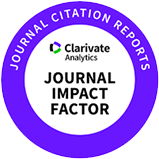Exploring the Potential of Salivary Small RNAs as Non-Invasive Biomarkers in Pigs
Abstract
Saliva, a non-invasive potential source of circulating microRNAs and microbiomes, is not well described in pigs. Salivary microRNA expression profiles and the functional significance in pigs were investigated in this study. Saliva samples were extracted from adult female pigs, and small RNA sequencing revealed 26 known and 223 novel miRNAs. The large number of novel miRNAs also demonstrates the differences between salivary miRNAs in pigs and other biological samples. Functional analysis of miRNA target genes indicated enrichments in molecular functions related to transcription regulator activity, cytoskeleton organization, and protein binding, suggesting roles for this interaction in gene expression and physiological control. Moreover, metagenomic analysis revealed microbial sequences representing around 39% of the total reads, with Corynebacterium genus, an important member of the oral microbiota, being the most prevalent. Combining miRNA with microbiome data indicates that porcine saliva is rich in molecular information that will be useful for salivary health monitoring and microbiome studies. This study underscores the potential of salivary miRNAs as biomarkers for physiological processes and microbiome interactions in pigs, paving the way for further research into their diagnostic and monitoring applications.
















